Methyl cinnamate
- CAS NO.:103-26-4
- Empirical Formula: C10H10O2
- Molecular Weight: 162.19
- MDL number: MFCD00008458
- EINECS: 203-093-8
- SAFETY DATA SHEET (SDS)
- Update Date: 2024-12-18 14:08:52
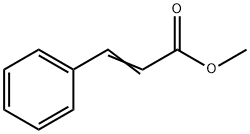
What is Methyl cinnamate?
Description
Methyl cinnamate is the methyl ester of cinnamic acid and is a white or transparent solid with a strong, aromatic odor. It is found naturally in a variety of plants, including in fruits, like strawberry, and some culinary spices, such as Sichuan pepper and some varieties of basil. Eucalyptus olida has the highest known concentrations of methyl cinnamate (98 %) with a 2 - 6 % fresh weight yield in the leaf and twigs.
Methyl cinnamate is used in the flavor and perfume industries. The flavor is fruity and strawberry-like; and the odor is sweet, balsamic with fruity odor, reminiscent of cinnamon and strawberry.
It is known to attract males of various orchid bees, such as Aglae caerulea.
Methyl cinnamate crystals extracted using steam distillation from Eucalyptus olida.
Chemical properties
Methyl cinnamate has a fruity, balsamic odor similar to strawberry and a corresponding sweet taste.
Occurrence
Reported found in the oil from rhizomes of Alpinia malaccensis, in the oil from leaves of Ocimum canum Sims.; in the oil of Narcissus jonquilla L.; in the oil from rhizomes of Gastrochilus panduratum Ridl.; two isomers (cis- and trans-) exist in natural. Also reported found in cranberry, guava, pineapple, strawberry fruit and jam, cinnamon leaf, Camembert cheeses, cocoa, avocado, plum, prune, cloudberry, starfruit, plum brandy, rhubarb, beli (Aegle marmelos Correa), loquat and Bourbon vanilla.
The Uses of Methyl cinnamate
Methyl cinnamate was used to inhibit monophenolase and diphenolase activity of mushroom tyrosinase and it also has antimicrobial ability. It is mainly is used in the flavor and perfume industries. It is known to attract males of various orchid bees, such as Aglae caerulea.
The Uses of Methyl cinnamate
Methyl cinnamate is used as a fragrance ingredient in cosmetics and household products.
Definition
ChEBI: Methyl cinnamate is a methyl ester resulting from the formal condensation of methyl cinnamic acid with methanol. It is found naturally in the essential oils of Alpinia and Basil leaf oil, and widely used in the flavor and perfume industries. It has a role as a flavouring agent, a fragrance, an insect attractant, a volatile oil component and an anti-inflammatory agent. It is a methyl ester and an alkyl cinnamate.
Preparation
Methyl cinnamate is synthesized by esterification of cinnamic acid with methanol using HCl as catalyst, or by adding HCl to a boiling solution of cinnamyl nitrile in methanol.
Synthesis Reference(s)
Journal of the American Chemical Society, 96, p. 1133, 1974 DOI: 10.1021/ja00811a029
Tetrahedron Letters, 29, p. 6119, 1988 DOI: 10.1016/S0040-4039(00)82281-9
General Description
Methyl cinnamate is an important flavoring agent and fragrance ingredient. It is one of the main aroma components of basil oil, Japanese and Korean matsutake mushrooms.
Flammability and Explosibility
Non flammable
Safety Profile
Moderately toxic by ingestion. Combustible liquid. When heated to decomposition it emits acrid smoke and irritating fumes.
Properties of Methyl cinnamate
| Melting point: | 33-38 °C (lit.) |
| Boiling point: | 260-262 °C (lit.) |
| Density | 1.092 |
| vapor pressure | 0.73Pa at 25℃ |
| refractive index | 1.5771 |
| FEMA | 2698 | METHYL CINNAMATE |
| Flash point: | >230 °F |
| storage temp. | Sealed in dry,Room Temperature |
| solubility | Chloroform (Slightly), Methanol (Slightly) |
| form | Fused Crystalline Mass |
| color | White to light yellow |
| Specific Gravity | 1.092 |
| Odor | at 100.00 %. sweet balsam strawberry cherry cinnamon |
| Water Solubility | insoluble |
| JECFA Number | 658 |
| Merck | 14,2299 |
| BRN | 386468 |
| CAS DataBase Reference | 103-26-4(CAS DataBase Reference) |
| NIST Chemistry Reference | 2-Propenoic acid, 3-phenyl-, methyl ester(103-26-4) |
| EPA Substance Registry System | Methyl cinnamate (103-26-4) |
Safety information for Methyl cinnamate
| Signal word | Warning |
| Pictogram(s) |
 Exclamation Mark Irritant GHS07 |
| GHS Hazard Statements |
H317:Sensitisation, Skin |
| Precautionary Statement Codes |
P280:Wear protective gloves/protective clothing/eye protection/face protection. |
Computed Descriptors for Methyl cinnamate
| InChIKey | CCRCUPLGCSFEDV-BQYQJAHWSA-N |
Methyl cinnamate manufacturer
HRV Global Life Sciences
U K Aromatics And Chemicals
Aamirav Ingredients And Specialties Pvt Ltd
New Products
4-Fluorophenylacetic acid 4-Methylphenylacetic acid N-Boc-D-alaninol N-BOC-D/L-ALANINOL Tert-butyl bis(2-chloroethyl)carbamate 3-Morpholino-1-(4-nitrophenyl)-5,6-dihydropyridin- 2(1H)-one Furan-2,5-Dicarboxylic Acid Tropic acid S-2-CHLORO PROPIONIC ACID ETHYL ISOCYANOACETATE 2-Bromo-1,3-Bis(Dimethylamino)Trimethinium Hexafluorophosphate (6-METHYL-[1,3]DITHIOLO[4,5-b]QUINOXALIN-2-ONE INDAZOLE-3-CARBOXYLIC ACID 4-IODO BENZOIC ACID (2-Hydroxyphenyl)acetonitrile 4-Bromopyrazole 5,6-Dimethoxyindanone 2-(Cyanocyclohexyl)acetic acid 4-methoxy-3,5-dinitropyridine 2-aminopropyl benzoate hydrochloride 1-(4-(aminomethyl)benzyl)urea hydrochloride diethyl 2-(2-((tertbutoxycarbonyl)amino) ethyl)malonate tert-butyl 4- (ureidomethyl)benzylcarbamate Ethyl-2-chloro((4-methoxyphenyl)hydrazono)acetateRelated products of tetrahydrofuran
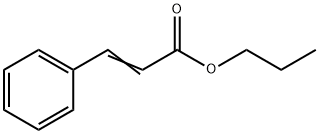
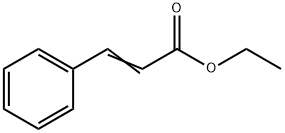



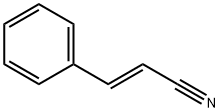
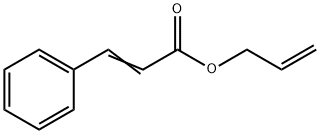

You may like
-
 103-26-4 Methyl cinnamate 99%View Details
103-26-4 Methyl cinnamate 99%View Details
103-26-4 -
 103-26-4 98%View Details
103-26-4 98%View Details
103-26-4 -
 Methyl cinnamate 95% CAS 103-26-4View Details
Methyl cinnamate 95% CAS 103-26-4View Details
103-26-4 -
 Methyl cinnamate, ≥98% CAS 103-26-4View Details
Methyl cinnamate, ≥98% CAS 103-26-4View Details
103-26-4 -
 Methyl cinnamate 98%View Details
Methyl cinnamate 98%View Details
103-26-4 -
 Methyl cinnamate 103-26-4 98%View Details
Methyl cinnamate 103-26-4 98%View Details
103-26-4 -
 Methyl Cinnamate CAS 103-26-4View Details
Methyl Cinnamate CAS 103-26-4View Details
103-26-4 -
 Methyl cinnamate CAS 103-26-4View Details
Methyl cinnamate CAS 103-26-4View Details
103-26-4